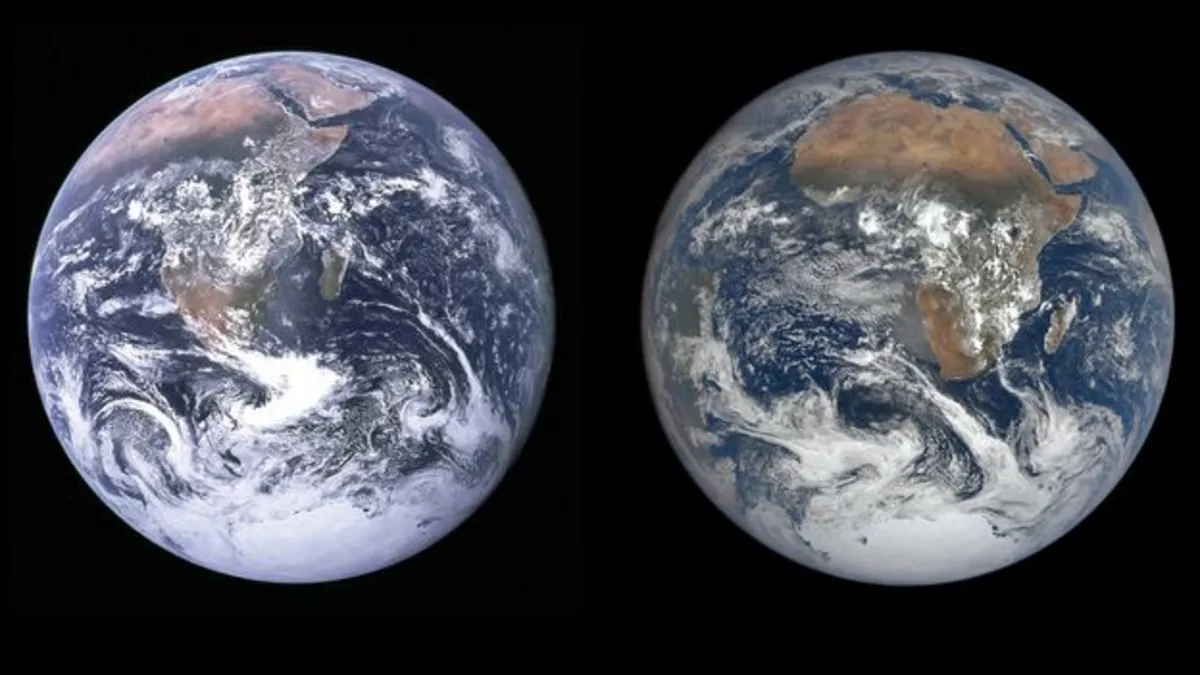
The iconic photograph known as The Blue Marble represents a pivotal moment in the history of space exploration. Captured on December 7, 1972, during the Apollo 17 mission, it was the first time humanity beheld the entire Earth from space. Astronaut Harrison Schmitt famously remarked that if there were ever a "fragile-appearing piece of blue in space," it was Earth at that moment.
As Apollo 17 journeyed toward the Moon, the crew—comprised of Commander Eugene Cernan, Command Module Pilot Ronald Evans, and Lunar Module Pilot Harrison Schmitt—watched their home planet diminish in size. Cernan described the clouds as "artistic" and "picturesque," showcasing the beauty and vulnerability of Earth amid the vastness of the Universe, which, to date, shows no signs of life beyond our planet.
The photograph, taken approximately 29,000 kilometers (18,000 miles) from Earth, not only highlighted the beauty of our planet but also sparked a new awareness of environmental challenges. Over the past 50 years, changes driven by human activity—such as urbanization, deforestation, pollution, and greenhouse gas emissions—have significantly altered the Earth's landscape.
The original Blue Marble image was captured using a hand-held Hasselblad 500 EL camera loaded with 70mm Kodak film. According to Jennifer Levasseur, a curator at the Smithsonian National Air and Space Museum, this camera was modified for the extreme conditions of space travel. The removal of the viewing screen meant that astronauts had to rely solely on their instincts to capture the breathtaking images of Earth.
Fast forward to December 7, 2022, exactly 50 years later, a new set of images of Earth was captured from a satellite orbiting one million miles away. These images, taken by NASA's Earth Polychromatic Imaging Camera (EPIC), reveal striking changes, particularly the shrinking of the Antarctic ice sheet—a significant indicator of climate change.
Research indicates that the Sahara Desert has expanded while rainforests are retreating. The new images starkly illustrate the shift from lush greenery to barren landscapes, showcasing the impact of deforestation and the loss of vegetation across the planet.
NASA's EPIC camera has been capturing images of Earth's sunlit side multiple times a day since 2015. With advancements in technology, the resolution and quality of these images have significantly improved, enabling scientists to gather crucial data on climate and environmental changes. This information includes the properties of ozone, clouds, and photosynthetic activity on Earth.
The Blue Marble photograph has not only changed how we see our planet but also influenced our understanding of our place in the Universe. Astronauts have reported experiencing the "overview effect," a profound sense of interconnectedness and environmental responsibility upon viewing Earth from space. Helen Sharman, the UK's first astronaut, described her awe-inspiring view of Earth as a glowing blue dot set against the darkness of space.
The Blue Marble has become a symbol of unity and environmental consciousness, inspiring movements like Earth Day and campaigns against pollution. As we look at the two images from 1972 and 2022 side by side, the Earth's atmosphere appears restless—a visual testament to the challenges we face in the age of climate change.
As we await the next manned mission to the Moon, the Artemis II mission planned for 2026, anticipation grows for a new human-captured image of Earth. Levasseur notes the unique impact of human observation, reminding us of our connection to the planet we call home.
In conclusion, the legacy of The Blue Marble continues to resonate as a powerful reminder of the beauty, fragility, and interconnectedness of our planet. As we strive to protect our environment, we must also recognize the role that imagery plays in shaping our understanding of Earth’s delicate balance.